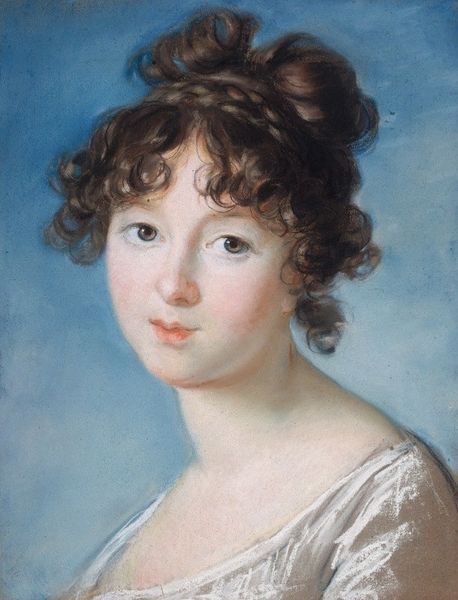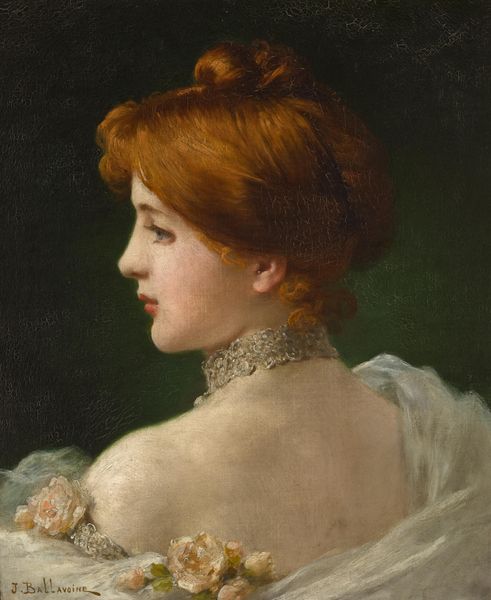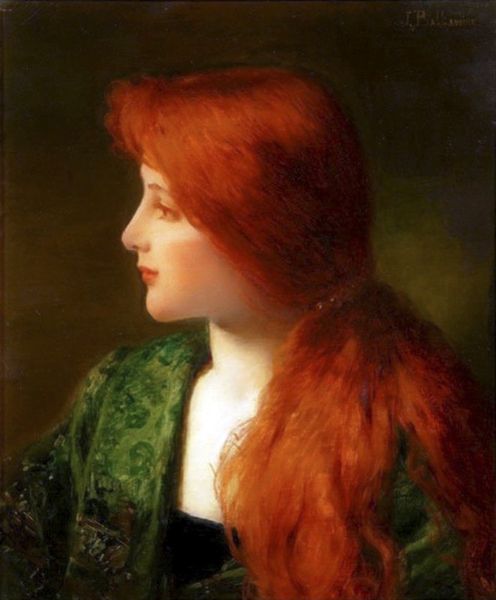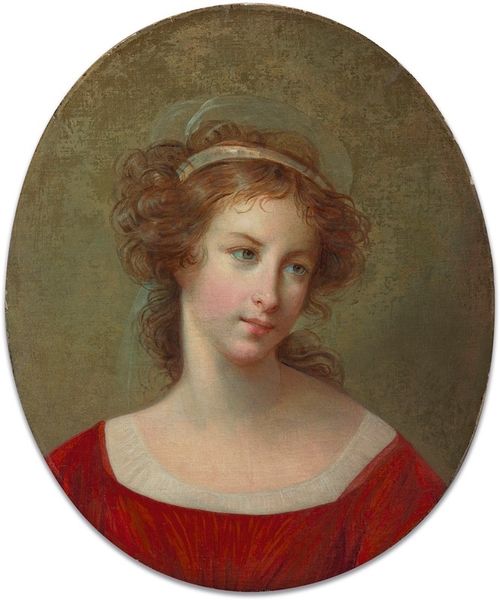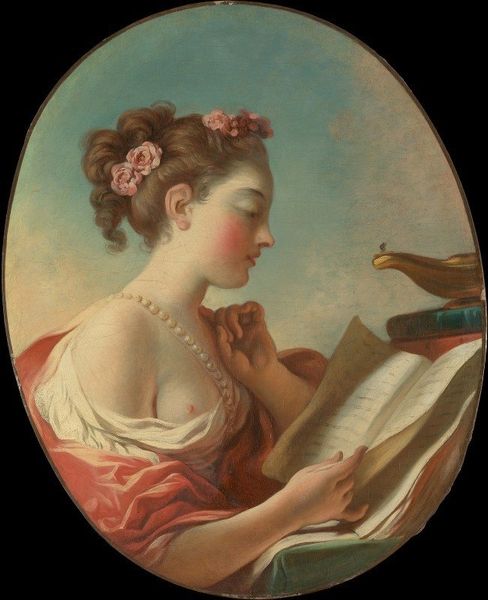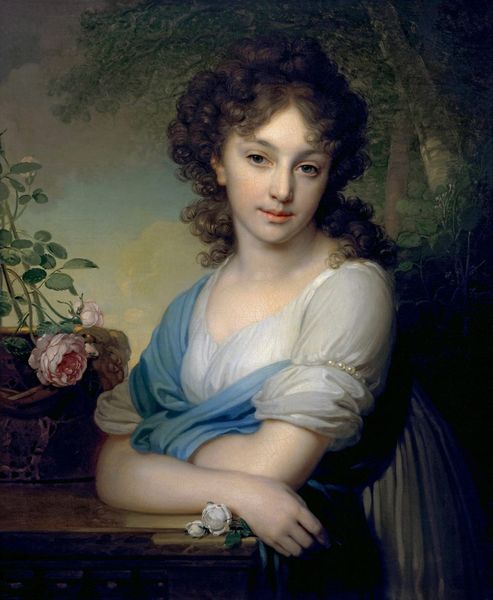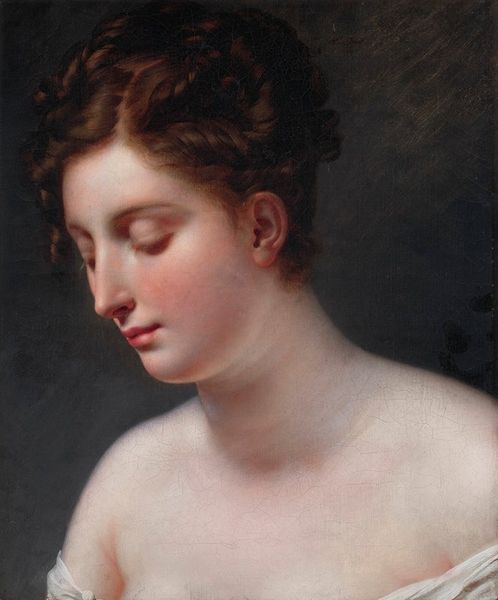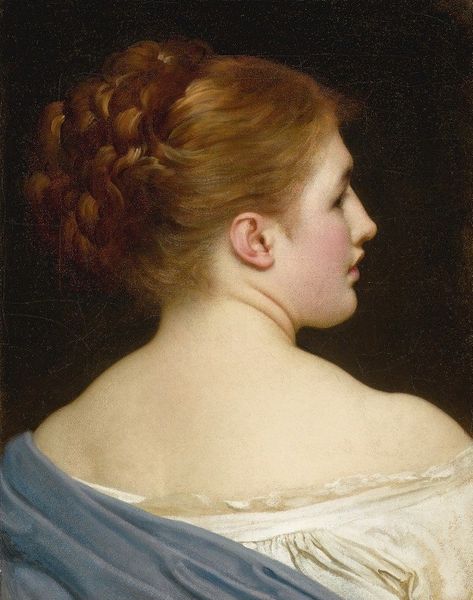
#
character portrait
#
possibly oil pastel
#
portrait reference
#
portrait head and shoulder
#
animal portrait
#
animal drawing portrait
#
portrait drawing
#
facial portrait
#
portrait art
#
digital portrait
Copyright: Jules-Frédéric Ballavoine,Fair Use
Editor: Here we have an unsigned portrait by Jules-Frédéric Ballavoine, possibly oil on canvas. She seems pensive, almost melancholic, as she reads this letter. What catches your eye in this piece? Curator: Beyond the romanticized image of the lone woman with a letter – a common trope – I’m curious about what isn’t said, and *who* gets to be represented. Notice the sitter’s stylized features and the emphasis on beauty; it fits into a broader historical context of art celebrating idealized femininity, typically catering to male viewers. Do you think this limits its reading? Editor: In some ways, yes. It feels almost like a stock image of feminine beauty. Was the artist perhaps trying to appeal to a particular taste or reinforce societal expectations? Curator: Precisely. Ballavoine worked within an art world shaped by patronage, exhibitions, and evolving social norms. He likely aimed to satisfy certain tastes, thus participating in the construction and reinforcement of societal norms about gender and beauty that shaped this artwork's meaning and its marketability. Think about how art academies and salons influenced such depictions at that time. Editor: That’s a really good point. It makes you wonder how her individuality might have been suppressed in favor of these expectations. Curator: Indeed. Analyzing this work involves understanding how art institutions contributed to, or challenged, existing power structures. How can we interpret such a seemingly 'simple' portrait in light of issues related to female agency or social visibility, when art itself was so deeply entwined with politics and public life? Editor: I see it differently now; there is power in knowing who shapes those norms, and how they did so. Thank you for sharing a wider perspective. Curator: My pleasure. Considering these works within the scope of larger cultural narratives gives them another layer of significance.
Comments
No comments
Be the first to comment and join the conversation on the ultimate creative platform.
